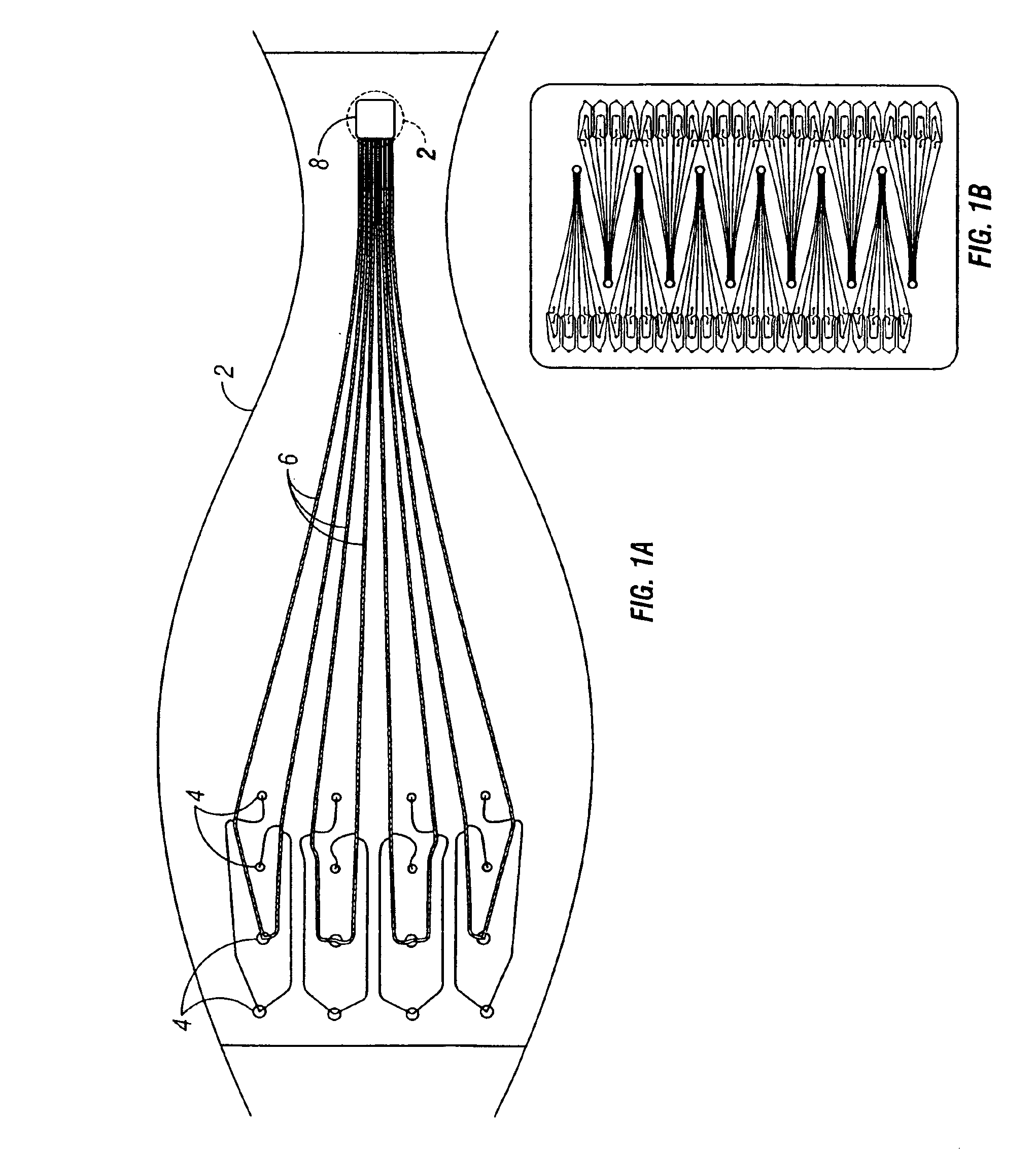Submersible light-directing member for material excitation in microfluidic devices
a microfluidic device and light-directing member technology, applied in fluorescence/phosphorescence, optical radiation measurement, laboratory glassware, etc., can solve the problems of imposing difficult demands on chip flatness or dimensional tolerance, adversely affecting sample detection capabilities, and affecting sample detection performance. , to achieve the effect of reducing interferen
- Summary
- Abstract
- Description
- Claims
- Application Information
AI Technical Summary
Benefits of technology
Problems solved by technology
Method used
Image
Examples
Embodiment Construction
[0035]In connection with the figures, the following text provides examples or variations of the invention. Turning to FIG. 1A, a portion of a chip (2) is shown. It includes a plurality of ingress reservoirs (4) in communication with a plurality of channels (6) which exit into a common waste well (8). Samples reagents added to selected ingress reservoirs are electrokinetically manipulated to carry out various processes as noted above.
[0036]FIG. 2 shows a detail of the chip in the area of the waste well. Multiple channels (6) empty into well (8). FIG. 3 shows the channels end-on as they enter the well. FIG. 4 shows a channel and the well in cross section, with the well partially filled with liquid to form a meniscus (10).
[0037]FIGS. 3 and 4 both illustrate a preferred manner of producing chip (2). A chip body (12) defines a portion of each of the aforementioned features, with a base backing or covering (14) affixed thereto that completes the channels and reservoirs / wells.
[0038]The mic...
PUM
 Login to View More
Login to View More Abstract
Description
Claims
Application Information
 Login to View More
Login to View More - R&D
- Intellectual Property
- Life Sciences
- Materials
- Tech Scout
- Unparalleled Data Quality
- Higher Quality Content
- 60% Fewer Hallucinations
Browse by: Latest US Patents, China's latest patents, Technical Efficacy Thesaurus, Application Domain, Technology Topic, Popular Technical Reports.
© 2025 PatSnap. All rights reserved.Legal|Privacy policy|Modern Slavery Act Transparency Statement|Sitemap|About US| Contact US: help@patsnap.com



